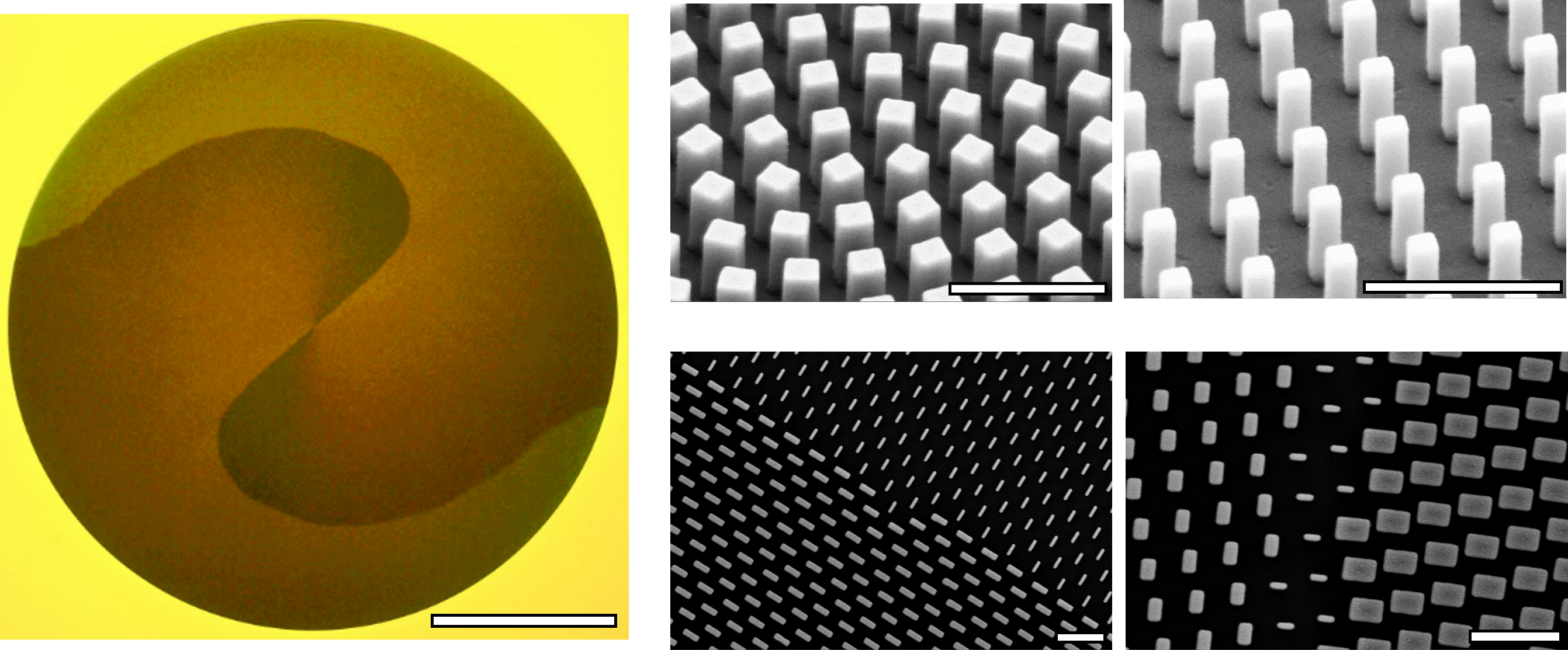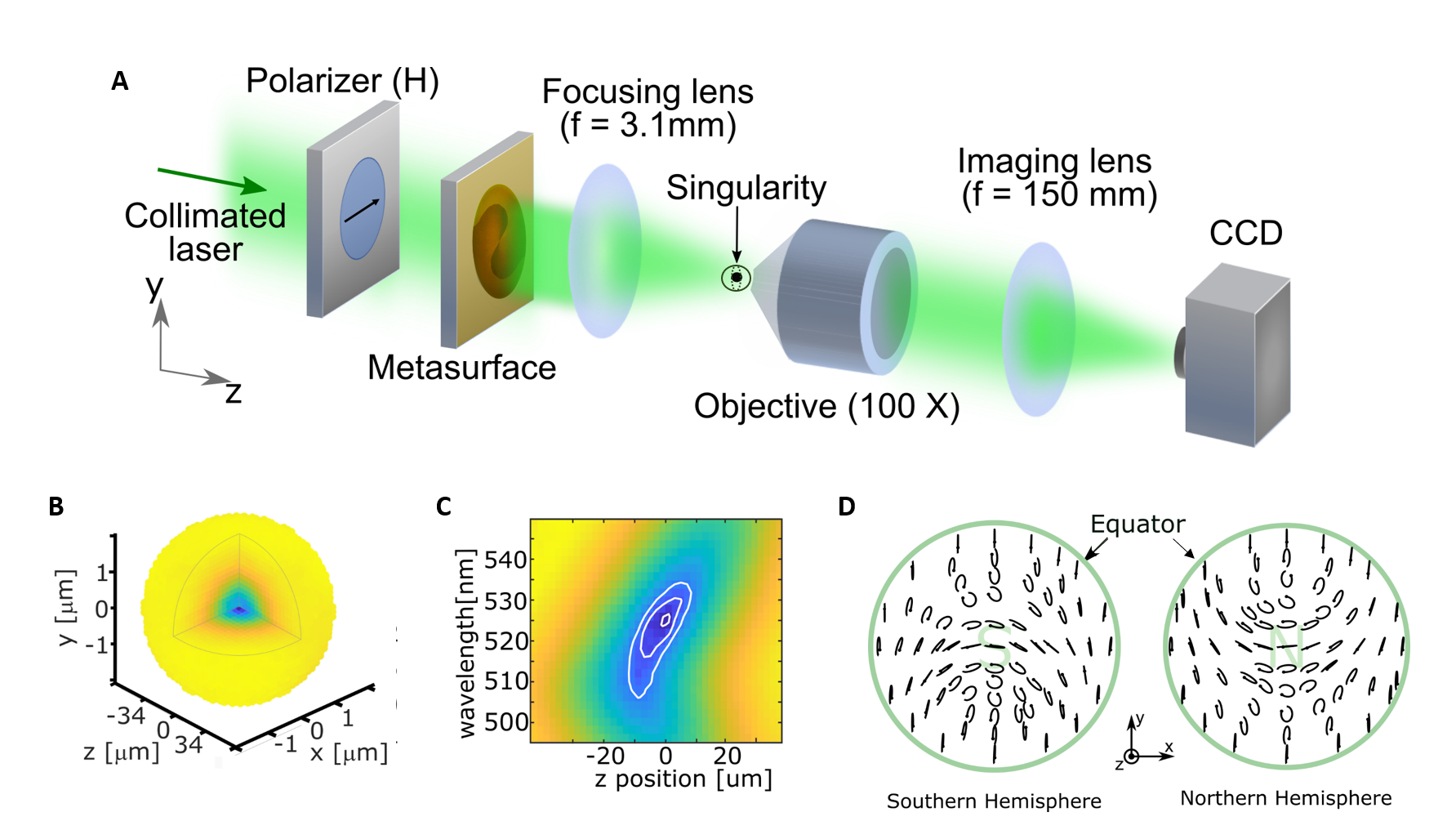Sculpting darkness with nanostructures
Our understanding of so-called “optical singularities” has driven the development of key optical sensing technologies: one of them is the Nobel-prize winning stimulated emission depletion (STED [1]) method, which enabled optical microscopy to surpass the fundamental diffraction limit by an order of magnitude. Optical singularities are points where a specific property of the electromagnetic field becomes undefined—such as the field's phase, polarization, or spin. This results in substantial field confinement and vastly changing field properties surrounding such singular points, making them of interest for applications such as high-precision-sensing, metrology, optical trapping or micro-manipulation. In the example of STED, phase singularities (donut beams) are used to deplete fluorescence from the donut’s outer ring, leaving only the very center - the singularity- to be detected by a probe beam. The field of super-resolution microscopy is driven by the development of more advanced forms of optical singularities.
I am interested in the use of nanostructures to create so far impossible to create optical singularities and to design their dimensionality and stability properties. To achieve advanced control over such optical structures (e.g. to make them stable against perturbations (topologically protected) or to shape them by-design), advanced optical control platforms are needed. Arrays of nanophotonic structures (metasurfaces) are uniquely positioned for the design of such singularities as they can control the phase-, polarization- and wavelength-profile of a transmitted wavefront at-will.

Optical image (left) and SEM images (right) of a metasurface used in [1]. Each of the nanostructures acts as a waveplate, locally controlling both phase and polarization of the transmitted wavefront. Scale bars are 250um and 1um, respectively.
So far, we have used such nanostructures to extend the set of topologically stable optical singularities (e.g. [1]) and to engineer arrays of dark points, which are particularly intriguing for applications in trapping, as noted in [2]. However, the potential applications of these nanostructures for singular optics extend far beyond, reaching from the creation of topologically stable singularity arrays to higher dimensions and complex shaping of the singular positions.

Extending the library of optical singularities: Topologically protected, complete polarization singularities. A metasurface can be used to create a topologically protected singularity at the focus of a loosely focusing lens (A). The singularity is a single dark point in space and wavelength (B-C) and its immediate surrounding contains all polarizations (and phases) of light (D). This 'protection shield' makes it stable against perturbations.
[1] Spaegele, C.M., Tamagnone, M., Lim, S.W.D., Ossiander, M., Meretska, M.L. and Capasso, F., 2023. Topologically protected optical polarization singularities in four-dimensional space. Science Advances, 9(24), p.eadh0369.
[2] Lim, S.W.D., Park, J.S., Kazakov, D., Spaegele, C.M., Dorrah, A.H., Meretska, M.L. and Capasso, F., 2023. Point singularity array with metasurfaces. Nature Communications, 14(1), p.3237.
